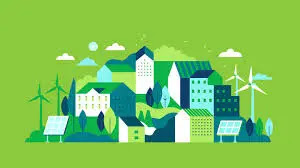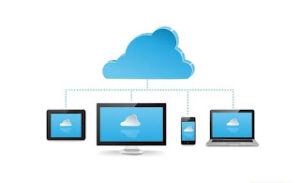Our Future Is Changing Electric Vehicles
{tocify} $title={ARTICLE INDEXING}
As the days go by, the demand and requirement of electric vehicle (EV) or electric vehicle is increasing. Electric vehicles are changing everything related to the use and supply of fuel. The World Economic Forum has published a report on this.
The report was titled “Smart Vehicles for All Cities: The Future of Energy and Mobility”. As is clear from the report, we are entering a new era of dynamism.
By 2040, more than half of all new cars sold in the world will be powered by electricity. More than 80% of cars in the European market and more than 50% in China will run on electricity.
Most people in our country have not yet started driving electric cars. However, experts believe that the use of electric vehicles will increase very fast.
We are at the crossroads of vehicle fuel electrification. The relentless advancement of electric vehicles will usher in a new era. As a result, a lot of electric vehicles will come on the road. At the same time, there will be a challenge to increase production in different electrical grids to keep the power supply in order.
It will also reduce traffic jams and pollution in the city by making electric vehicle management smarter. As a result, it will be possible to achieve economic growth much faster. Technologies such as ride sharing, car sharing and autodriving cars will become part of modern city planning. However, the biggest opportunity to change our future can be exploited through electrification of vehicles.
As with any new technology, increasing the use of electric vehicles will bring about a radical change in society. In this huge change in the transport industry, some will win and some will lose. This change will affect all major industries, including oil and gas. However, first of all it will affect the automobile and power sector. Of course, there will also be opportunities for large oil and automotive companies to bring new business models in electric transport, electric power supply and energy management.
Strength and mobility will meet at the same point
In future we will recharge cars not at a filling station but at a charging station. And most of the time we don’t have to drive to the fuel station. Instead, we can recharge our cars at home and at work.
Electrification of the transportation system will diversify the energy industry and reduce dependence on fossil-based sources. Again the cost of vehicle ownership will be reduced and the price of the vehicle will be stabilized. It will also create national security, energy independence and a healthy environment.
The potential benefits of the power sector are many. By 2035, electric cars will be one of the 9 cars sold worldwide. China, India and EU countries are planning to eliminate fossil fuel-powered vehicles. Utility companies will be interested in supplying electricity to electric vehicles.
Industries that stagnate will also be able to change their business practices. Proceeds from the sale of electrons to charge the batteries of new conventional vehicles will provide additional impetus. Bloomberg New Energy Finance (BNEF) estimates that converting 236 million gas-powered cars in the United States into electric vehicles would increase revenue by about 115 billion.
Converting electric vehicles into grid assets
So far the possibility of electric transport system has been discussed. But combining solar and wind power is quite a challenge. Because these energies are not found endlessly in nature. As a result, the vehicle needs all the backup generators to fully utilize the power, which can be turned on quickly when needed. At present these generators run on fossil fuels like natural gas. Gas is not only expensive but also an obstacle to sustainable development. In the future, there will be opportunities to generate electricity on the grid with electric vehicles through the vehicle-to-grid (V2G) system.
Again, when demand is high, stored electricity can be returned to the grid. These can be cycled on and off if the power supply and demand needs to be balanced in the grid. Simply put, when a lot of vehicles are connected to the power grid together, the vehicles will collectively act as a backup generator.
Utility companies may already be using this method. This can be ensured through existing electric charging management programs so that vehicles can increase customer engagement and satisfaction by acting as a valuable source of electrical resources.This can only be understood by imagining all electric vehicles as grid resources. Every electric vehicle is a moving storage unit. Much like a battery mounted on a wheel. An electric vehicle can store 3 days of usable electricity at home. The electricity stored in the car battery can be used when needed. When solar energy and wind energy are abundant in nature, it will be possible to store electricity in the car.





